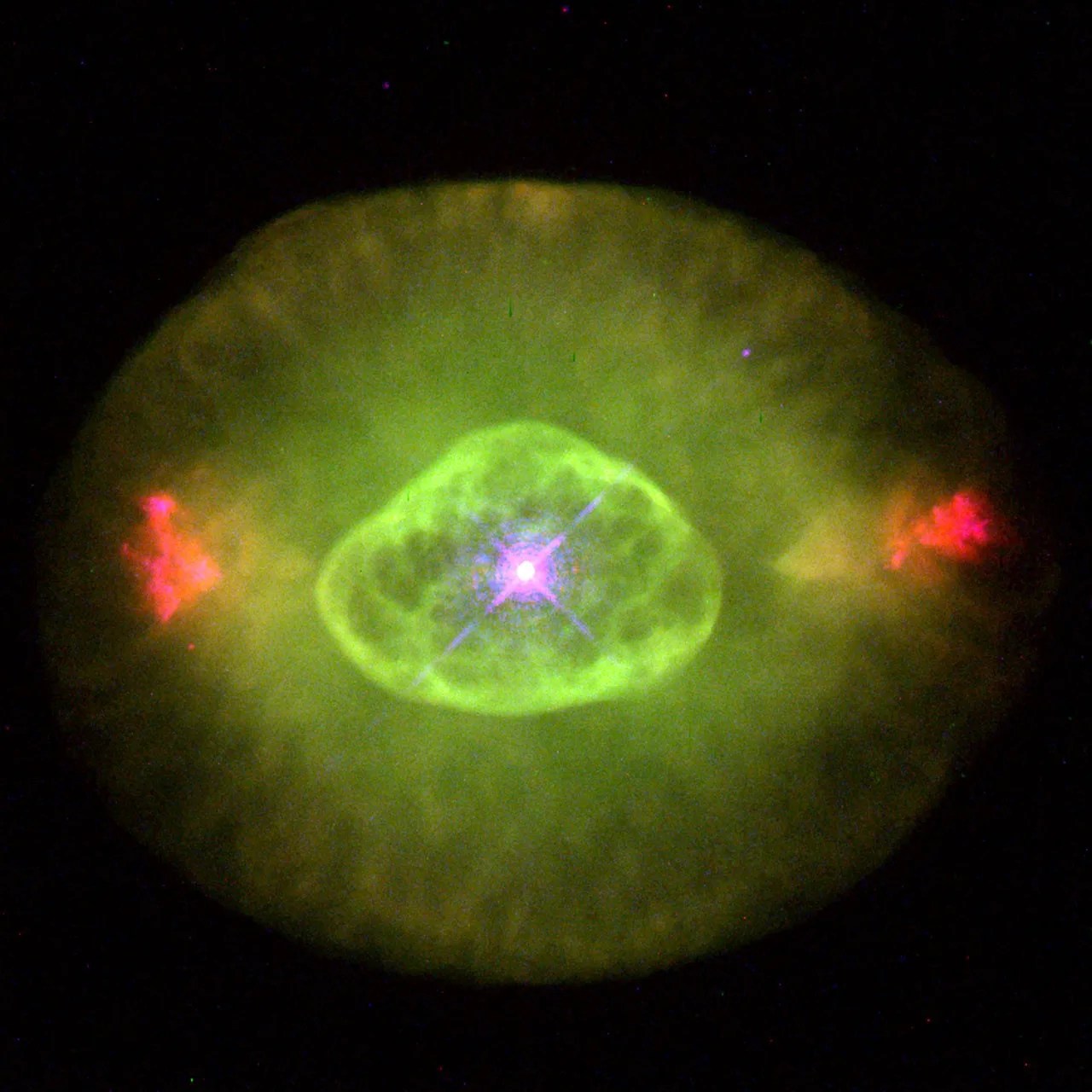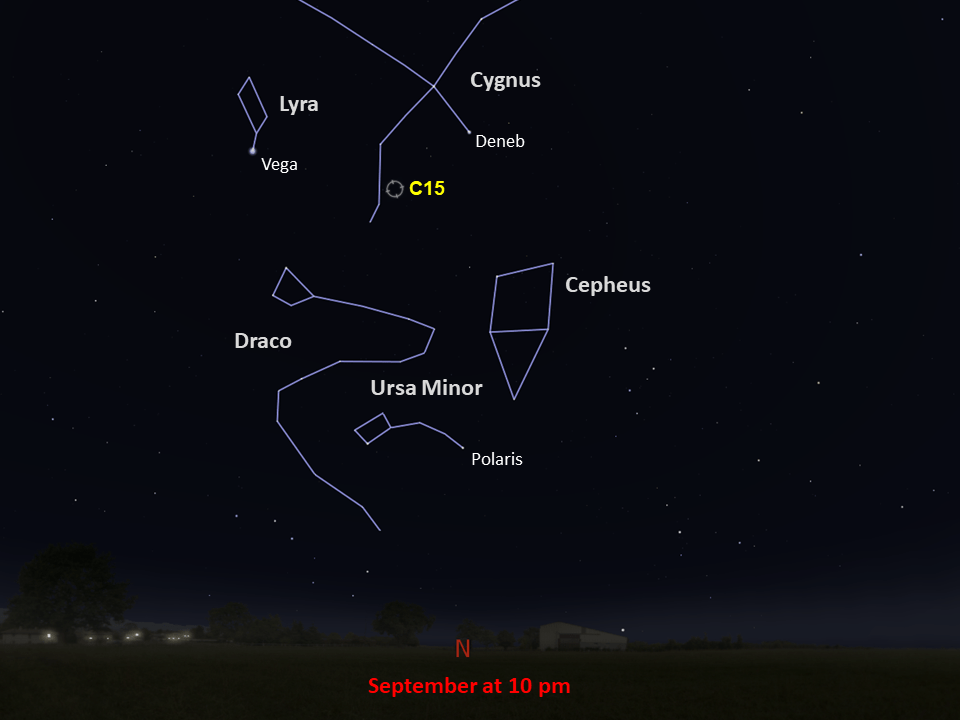Caldwell 15
A blinking remnant star, called a white dwarf, sits at the heart of this colorful nebula.
Distance
2,200 light-years
Apparent Magnitude
8.8
constellation
Cygnus
object type
Planetary Nebula

When observers look directly at Caldwell 15 through a small telescope, they typically see only the nebula’s sparkling-white central star. However, by averting one’s gaze, glancing away from the central star, the nebula's bulbous dust clouds come into view. This optical trickery earned this planetary nebula the name the "Blinking Planetary.”
The Blinking Planetary’s bright, white remnant star – known as a white dwarf – is surrounded by a greenish orb of gas and dust, the outer layers of the burned-out star that jettisoned into space. This cloud is flanked on both sides by bursts of red gas called FLIERS, or fast low-ionization emission regions. In these relatively young features, electrically charged atoms shoot off into space at supersonic speeds. This image of Caldwell 15 was captured by Hubble’s Wide Field and Planetary Camera 2 in January 1996 to help astronomers better understand how the nebula’s FLIERS form.
Caldwell 15 was discovered by British astronomer William Herschel in 1793. With a magnitude of 8.8, the nebula is found in the constellation Cygnus, and it is best observed during warm summer nights in the Northern Hemisphere. It will appear low in the northern sky for Southern Hemisphere observers during the winter. Also known as NGC 6826, Caldwell 15 is about 2,200 light-years away from Earth. Young and small, the planetary nebula is only about a thousand years old and less than half a light-year across.
For more information about Hubble’s observations of Caldwell 15, see:
Eye-Shaped Planetary Nebula NGC 6826

Glossary
Magnitude - The brightness of an astronomical object, represented by a number; bright objects have low numbers on the magnitude scale, while dim objects have high numbers.
Nebula - An interstellar cloud of dust and gas; either a location where new stars are being forged or a cloud of material ejected into space by a dying star.
Planetary Nebula - An expanding shell of gas around an aging or dying Sun-like star, cast off by the star.
White Dwarf - The core of a dead Sun-like star whose outer layers have been expelled into space.
Explore Hubble's Caldwell Catalog
The following pages contain some of Hubble’s best images of Caldwell objects.

Caldwell 1
Also known as NGC 188, this group of stars formed from a large cloud of gas making the stars roughly…

Caldwell 2
This shell of gas is expanding outward, away from the dying star within.

Caldwell 3
This barred spiral galaxy was first spotted by British astronomer William Herschel in April 1793 in the constellation Draco.




